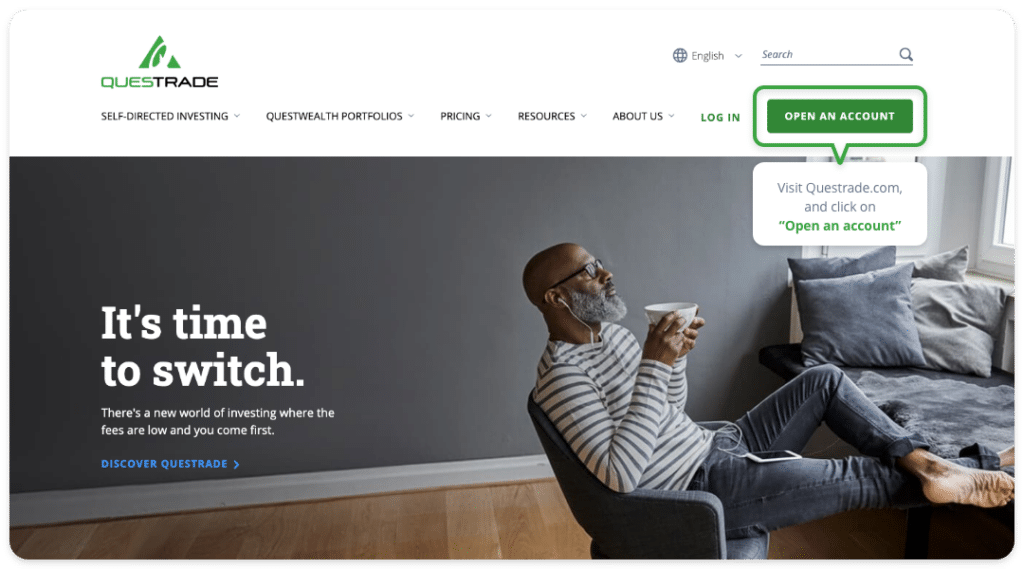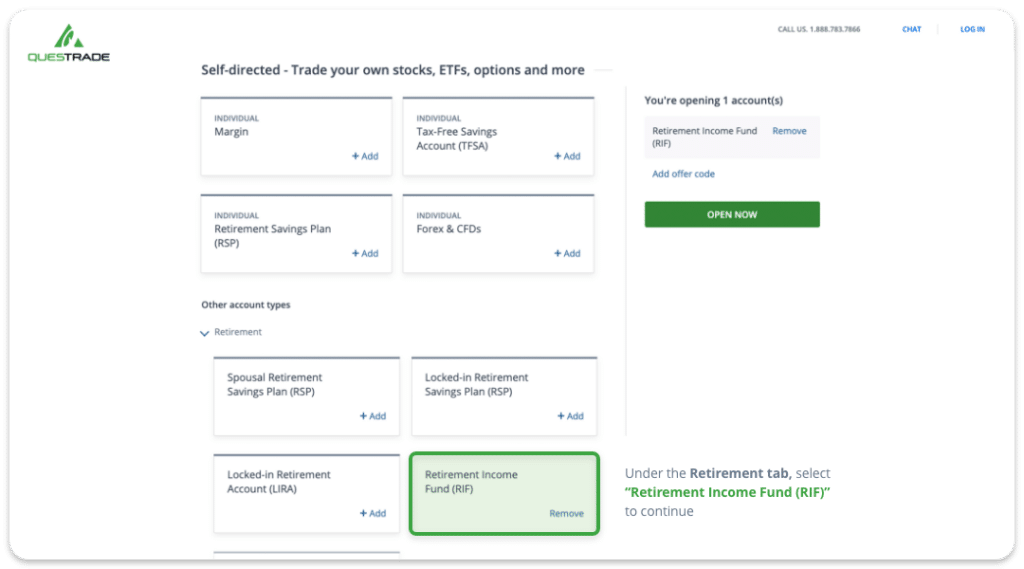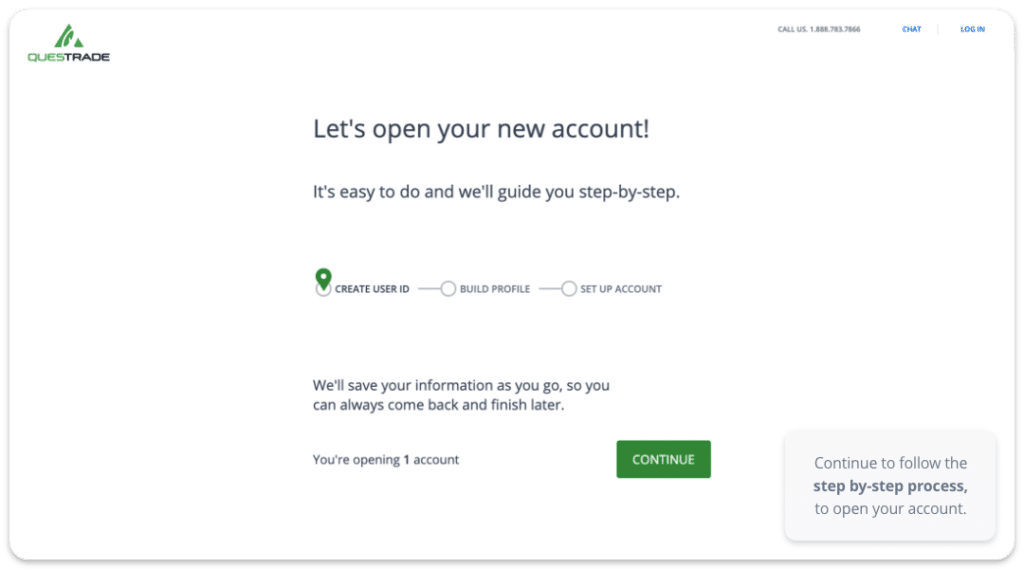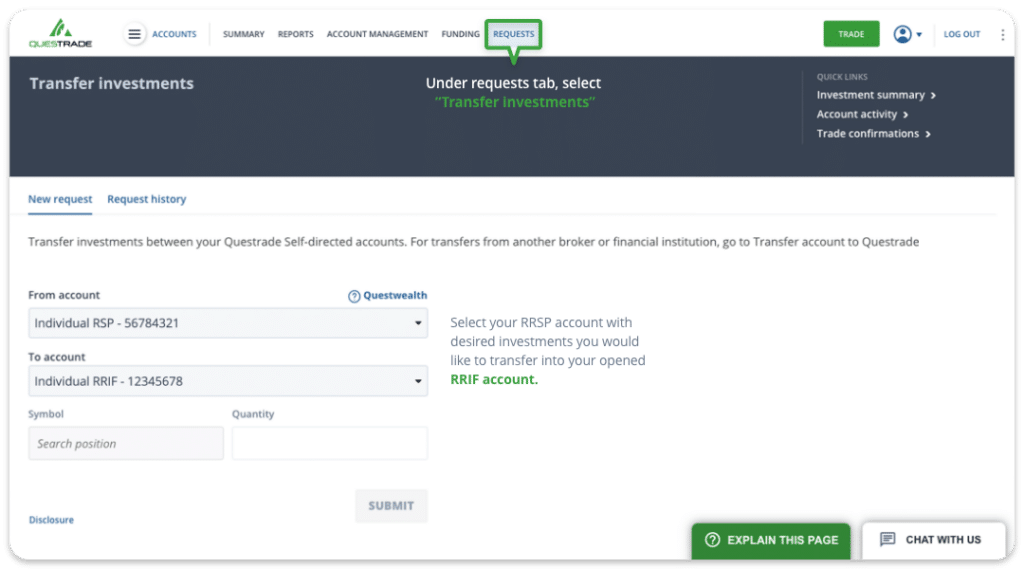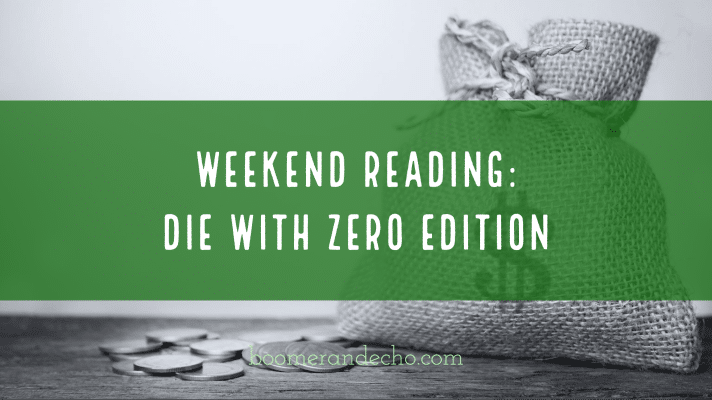This article has been sponsored by BMO Canada. All opinions are my own.
I’m on record to say that the vast majority of self-directed investors should simply use a single asset allocation ETF to build their investment portfolios.
What’s not to like about asset allocation ETFs? Investors get a low cost, risk appropriate, globally diversified portfolio in one easy to use product. It’s a fresh take on an old idea – the global balanced mutual fund – updated for the 2020’s using low-cost ETFs.
Investors don’t even have to worry about rebalancing their portfolio when they add or withdraw money, or when markets move up and down. Asset allocation ETFs automatically rebalance themselves regularly to maintain their original target asset mix.
This article looks at BMO’s line-up of asset allocation ETFs, which include a conservative (ZCON: 40/60), balanced (ZBAL: 60/40), growth (ZGRO: 80/20), and balanced ESG (ZESG: 60/40) option.
These BMO asset allocation ETFs are available for self-directed investors to purchase through their online brokerage account. Notably, these ETFs can be traded commission-free through BMO InvestorLine and Wealthsimple Trade.
What’s inside BMO’s Asset Allocation ETFs?
Launched in February 2019, BMO’s core asset allocation ETFs are made up of seven underlying ETFs representing various asset classes and geographic regions.
On the equity side we have:
- ZCN – BMO S&P/TSX Capped Composite Index ETF
- ZSP – BMO S&P 500 Index ETF
- ZEA – BMO MSCI EAFE Index ETF
- ZEM – BMO MSCI Emerging Markets Index ETF
While on the fixed income side we have:
- ZAG – BMO Aggregate Bond Index ETF
- ZGB – BMO Government Bond Index ETF
- ZMU – BMO Mid-Term US IG Corp Bond Hedged to CAD Index ETF
Altogether these seven ETFs represent nearly 5,000 individual stock and bond holdings from around the world.
In terms of geographic equity allocation, the BMO asset allocation ETFs hold 25% in Canadian stocks, 25% in international stocks, 40% to 41.25% in US stocks, and 8.75% to 10% in emerging market stocks.
BMO reviews their portfolios quarterly and will rebalance any fund that is more or less than 2.5% off from its target weight. In reality, these funds are rebalanced regularly with new cashflows from new investors.
BMO’s Balanced ESG ETF (ZESG) is made up of six underlying ETFs, including:
- ESGY – BMO MSCI USA ESG Leaders Index ETF
- ZGB – BMO Government Bond Index ETF
- ESGA – BMO MSCI Canada ESG Leaders Index ETF
- ESGE – BMO MSCI EAFE ESG Leaders Index ETF
- ESGB – BMO ESG Corporate Bond Index ETF
- ESGF – BMO ESG US Corporate Bond Hedged To CAD Index ETF
The management expense ratio for each of the BMO asset allocation ETFs is 0.20%. There is no duplication of fees or additional charges for the underlying ETFs.
Performance of BMO Asset Allocation ETFs
Now let’s look at the performance of each of BMO’s asset allocation ETFs.
BMO Growth ETF – ZGRO
The most popular asset allocation ETF in the line-up is BMO’s Growth ETF – ZGRO, with $119.5 million in assets under management. ZGRO is the 80% stock / 20% bond version.
Here are the calendar returns for ZGRO since inception:
- 2019: 11.07%
- 2020: 10.69%
- 2021 (July 31): 9.33%
ZGRO’s top holding is ZSP (US equities), which makes up 33.5% of the fund, followed by ZCN (Canadian equities), which makes up 20% of the fund.
BMO Balanced ETF – ZBAL
BMO’s Balanced ETF (ZBAL) represents the classic 60/40 balanced portfolio. ZBAL has $118.9 million in assets under management.
Here are the calendar returns for ZBAL since inception:
- 2019: 9.65%
- 2020: 10.27%
- 2021 (July 31): 6.34%
ZBAL’s top holding is ZAG (Canadian aggregate bonds) at 26% of the fund, followed by ZSP (US equities) at 25% of the fund.
BMO Conservative ETF – ZCON
BMO’s Conservative ETF portfolio (ZCON) has $47.5 million in assets under management and represents a 40% stock / 60% bond portfolio.
Here are the calendar returns for ZCON since inception:
- 2019: n/a
- 2020: 9.77%
- 2021 (July 31): 3.38%
ZCON’s largest holding is ZAG (Canadian aggregate bonds) at 40% of the fund, followed by ZSP (US equities) at 17% of the fund.
BMO Balanced ESG ETF – ZESG
Finally, we have BMO’s Balanced ESG ETF (ZESG), which was launched in January 2020. The fund has gathered assets of $46.75M so far. The Sustainable Economist Tim Nash said of ZESG, “I’m thrilled to have it as an option for sustainable investors.”
Here are the calendar returns for ZESG since inception:
- 2019: n/a
- 2020: 8.51%
- 2021 (July 31): 7.90%
ZESG’s largest holding is ESGY (US equities) at 32.5%, followed by ZGB (Canadian government bonds) at 23.5%.
Final Thoughts
BMO’s asset allocation ETFs may fly under the radar compared to its Vanguard and iShares competitors. But they absolutely deserve a look for self-directed investors who want to build a simple, low cost, globally diversified portfolio with a single-ticket solution.
BMO’s asset allocation ETFs have a lower MER than Vanguard’s products, and are on par with iShares’ asset allocation ETFs at 0.20% MER.
PWL Capital’s Justin Bender reviewed BMO’s asset allocation ETFs (ZCON, ZBAL, ZGRO) and compared them to iShares’ XCNS, XBAL, and XGRO.
Mr. Bender came to the same conclusion that BMO’s asset allocation ETFs, “deserve your attention as well.”
The bottom line: DIY investors can use BMO’s core asset allocation ETFs to build a globally diversified and risk appropriate portfolio with just a single ETF.
Furthermore, socially conscious investors looking for an easy way to build a diversified ESG portfolio can do so with BMO’s Balanced ESG ETF Portfolio (ZESG).

Many investors like to take the reins and self-manage their own investment portfolio using a discount brokerage platform. DIY investing can be relatively straightforward during your contribution years, but investing can get more complicated when it comes time to withdraw from your portfolio. This article will explain the steps involved in converting your RRSP to a RRIF using the Questrade platform (know that the process should be similar across discount brokerage platforms).
Before we get into the details, here’s a quick guide to Registered Retirement Income Funds:
RRIF Basics
A Registered Retirement Income Fund (RRIF) is a way to convert your RRSP into an income stream. You can open a RRIF at any time, but you must convert your RRSP to a RRIF by the end of the year you turn 71.
Once your RRSP has been converted to a RRIF you must begin withdrawals by the next calendar year. There’s a minimum mandatory withdrawal schedule that you must follow, which increases every year.
The withdrawal formula for those 70 and under is calculated as 1/(90 – age). For example, a 65-year-old must withdraw a minimum of 4% (1/90-65).
The minimum withdrawal amount is based on the value of your RRIF on December 31 of the previous year. Again, our 65-year-old investor who has a RRIF balance of $425,000 as of December 31 last year would need to withdraw a minimum of $17,000 (4% of $425,000) by the end of this year.
The minimum RRIF withdrawal at age 71 is 5.28%.
As a RRIF holder you must follow the minimum withdrawal schedule, but know that there is no maximum limit to how much you can withdraw in a given year (whether you want to withdraw more is another story).
Investors can continue to invest their funds inside a RRIF in the same way they invested inside their RRSP.
RRIF Tips To Consider
Minimum required withdrawals from a RRIF will not be subject to withholding taxes from your financial institution. Withdrawals from your RRSP are immediately subject to withholding tax of 10% to 30%, depending on the amount withdrawn. Of course, RRIF withdrawals are still considered taxable income so plan your cash flow accordingly for tax time.
RRIF withdrawals at age 65 qualify as eligible pension income. This allows the recipient to claim the Pension Income Tax Credit (a non-refundable tax credit of up to $2,000). RRIF withdrawals at 65 and older are also eligible for pension splitting with your spouse.
Lump sum withdrawals from an RRSP are not considered eligible pension income and does not qualify for the Pension Income Tax Credit. RRSP withdrawals cannot be split with a spouse.
Some financial institutions charge what’s called a partial de-registration fee to withdraw funds from an RRSP (the fee can be as high as $50 per withdrawal). Withdrawals from a RRIF plan are typically done fee-free.
Many retirees convert their RRSP to a RRIF well before the mandatory age of 71 to take advantage of the above benefits. Know that you can hold more than one RRIF. You can convert a small portion of your RRSP to a RRIF to take advantage of the Pension Income Tax Credit while keeping the remainder of your RRSP intact until age 71.
One retirement income strategy that is becoming more popular is to withdraw from an RRSP or RRIF to meet your spending needs in your 60s and then defer taking CPP until age 70 to lock-in a 42% enhancement to your government benefits.
Converting Your RRSP To A RRIF At Questrade
With the RRIF basics and tips out of the way, let’s look at exactly how a DIY investor can convert their RRSP to a RRIF on their own.
The process of converting your RRSP to an RRIF at Questrade is quite simple and only requires three steps:
1.) Open an RRIF at Questrade (you’ll be asked to confirm payment details as part of the account application process to ensure your RRIF payments will be processed correctly).
2.) Transfer the holdings of your RRSP to the new RRIF account (the rollover process takes 3-4 business days, and you won’t be able to trade during that time).
3.) Start receiving your RRIF payments
Questrade has a team of customer service agents to help if you need assistance. I’ve personally found the online chat feature to be helpful if you don’t want to wait on hold.
If a customer hasn’t opened their RRIF and rolled over their assets by December of the calendar year they turn 71, then Questrade will automatically open the RRIF and complete this process for them – all at no additional cost. To re-iterate, there is no mandatory minimum withdrawal in the year the RRSP is converted to a RRIF, but there are mandatory minimum withdrawals beginning the next calendar year.
When it comes to converting a Locked-In Retirement Account (LIRA) to a Life Income Fund (LIF), the process is almost identical, except that you open a LIF from the account opening screen instead of a RRIF.
Final Thoughts
Many self-directed investors are confused about converting their RRSP to a RRIF. They want to know if they can do it themselves, or if the process is automatic. They want to know if it’s possible to convert an RRSP to a RRIF prior to age 71, and why it would make sense to do so.
Hopefully this article has shed some light on how easy it is for DIY investors to convert their RRSP to a RRIF using the Questrade platform, or any other discount brokerage platform.
One of the biggest worries for retirees is the fear of outliving their savings. This fear leads many to spend less than they are able to, both during their working years and throughout retirement. It can also lead to “one-more-year” syndrome, where individuals kick the retirement can down the road a little bit longer while continuing to squirrel away money.
Consider this retirement planning scenario where a two-income family earns $170,000 in gross income and spends about $72,000 per year after taxes throughout their working years (adjusting for inflation each year).
They use their extra cash flow to max out their registered accounts, pay off the mortgage early, and open taxable investing accounts to save and invest even more of their disposable income.
At age 65, this couple is able to spend a whopping $128,000 per year after taxes without running out of money by age 95.
This couple’s particular income and spending may not align with your household income and spending. But the scenario itself is more common than you’d think.
Now, what’s the likelihood that a couple who’s used to spending $6,000 per month and saving at such a high rate will be able to turn off the savings ‘taps’ and open up the spending ‘taps’ to the tune of $10,666 per month?
That’s a 77% increase in spending!
Consumption Smoothing
Enter the concept of consumption smoothing. The idea is to avoid that asymmetrical saving and spending pattern and “smooth out” consumption over your entire lifetime.
Think about it. When we’re young we have plenty of time but scarce financial resources. Then when we’re older we have plenty of resources (typically) but much less time.
Why sacrifice too much of our potential consumption (spending) in our early years when we might not be around to enjoy it in our later years?
Note that the concept of consumption smoothing is not the same as a YOLO (you only live once) mindset where you don’t save at all.
It’s more about recognizing that we only have so much time on this planet, and only so much of that time when we’re healthy and energetic enough to tackle everything on our bucket lists.
Consumption smoothing means the family struggling with competing financial priorities can give themselves a break rather than trying to max out all of their savings vehicles. It means that diligent savers can pause their aggressive savings contributions once they reach a certain level and start enjoying some of the fruits of their labour.
Related: My Path To Coast FIRE
Die With Zero
Consumption smoothing is discussed at length in a book I recently finished called Die With Zero.
The author, Bill Perkins, stresses the need to live your richest life now rather than waiting for your retirement years. Perkins wants readers to maximize their so-called life energy and be more present in the moment to minimize future regrets.
He says this doesn’t mean being irresponsible with your money or not saving for the future. For those who plan on leaving an inheritance for their children or to a favourite charity, Perkins adopts the “give while you live” philosophy and encourages readers to include those gifts in their spending plans rather than waiting until the will is read.
Die With Zero is worth a read for those who struggle balancing saving and spending.
Note that Canadian retirement income expert Fred Vettese also agrees with the idea of consumption smoothing, saying that Canadians can probably get away with saving a little bit less during their working years if they take advantage of these five strategies to enhance your retirement.
So what does consumption smoothing look like? Using our previous example of a two-income couple spending $72,000 per year during their working years and then increasing that to $128,000 in retirement, we can adjust that spending to $95,000 per year until age 95.
This approach allows our couple to spend more now (nearly $8,000 per month) and build in some experiences that they may have put off until retirement.
It also addresses a common theme expressed by most of my financial planning clients: the desire to maintain their current standard of living when they retire.
Promo of the Week:
We’re closing in on this year’s Canadian Financial Summit and I’m back once again with another session – this time talking about overcoming investing FOMO. We’ve seen a lot of that in the past 18 months with the rise of meme stocks, innovative technology stocks and ETFs, and cryptocurrencies surging once again.
The Summit will have plenty of other speakers and topics to satisfy your interests. I’m excited for the all-star panel of PWL Capital’s Ben Felix, Passiv’s Brendan Wood, and the Sustainable Economist Tim Nash answering all of your questions and misconceptions about DIY investing.
Claim your free ticket to the Canadian Financial Summit and check it out when the event goes live on September 22nd.
Weekend Reading:
Our friends at Credit Card Genius highlight seven credit cards with extra cash back. Check out their new “GeniusCash” feature.
Here’s the benefit of giving your kids a chunk of their inheritance before you die:
“There’s an emotional reward that comes with giving adult children money to buy a house, start a business or simply support their families, experts say, as well as financial benefits of reducing the value of your future estate.”
A fantastic piece by financial planner Natasha Knox on renting vs. home ownership. Why you can be financially secure without buying.
On theme for today, fears of running out of money prevent many retirees from tapping the nest egg they’ve worked a lifetime to save. Here’s how to spend without worry in retirement.
Retirement expert Don Ezra looks at how to help people with decumulation decisions, using a very real issue taking place in Australia.
Here’s the difference between aging in place and getting stuck in place:
“Our homes can also turn into cages if we are not careful. As we spend our money on maintaining them we may have to cut our expenses to pay this which may then further isolate us as our disposable income declines.”
Future housing returns are stark. Here’s why your home is not an investment.
The Humble Dollar’s Jonathan Clements discusses trade-offs: spending today vs. saving for tomorrow; risk vs. return; hiring an advisor vs. DIY.
Millionaire Teacher Andrew Hallam says stocks are going to crash. The problem is, like everyone else, he doesn’t know when.
My Own Advisor blogger Mark Seed asks, why would anyone own bonds now?
Here’s Morgan Housel with a number from today and a story about tomorrow.
Of Dollars and Data blogger Nick Maggiulli with an excellent piece on what really predicts happiness.
Finally, here’s how to pick a job that will actually make you happy.
Have a great weekend, everyone!



